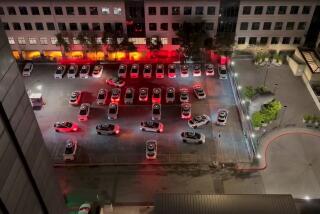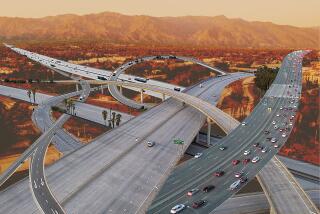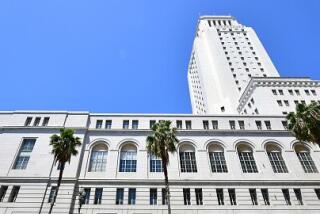You Can Flash Your Brights, but You Still Have to Wait
Dear Street Smart:
A lot of times when I’m driving home at night I come up to a stoplight that never seems to change.
Several times when I’ve been waiting at the intersection of Moorpark and Gainsborough roads in Thousand Oaks, I have flashed my brights at the red light and the traffic light changed within seconds.
Does flashing your high beams at the traffic signals really work? It seems like it does.
Tara Petrash, Thousand Oaks
Dear Reader:
Transportation officials in Thousand Oaks say there is no way that high beams can affect traffic signals in their city.
The signals there are equipped with a metal-plated sensor that detects a waiting car, but flashing a vehicle’s high beams cannot trigger those mechanisms, transportation analyst Jeff Knowles said.
“It just so happens that the signal would be changing anyway,” he said.
In some cities, Knowles said, traffic signals are equipped with special sensors designed to detect the flashing strobe lights of fast-approaching emergency vehicles.
“But we do not have anything like that in Thousand Oaks,” he said.
****
Dear Street Smart:
I drive a 1992 Toyota Tercel, and when I come to a traffic light on Channel Islands Boulevard and Victoria Avenue in Oxnard and I’m the only one in the lane, the signal does not change so I can make a left turn onto Victoria unless another car comes up behind me.
It happens all the time with me. You said in an earlier column that traffic engineers in Simi Valley wanted to know where this happens so that they could adjust it. Can Oxnard traffic people adjust the sensors at traffic signals?
Geralyn M. Culley, Oxnard
Dear Reader:
Most traffic signals get out of tune at one time or another when it comes to sensing motor vehicles, transportation officials say. Oxnard’s are no exception.
Nonetheless, Oxnard transportation analyst David Denton said your letter surprised him because cars are almost always heavy enough to trigger the underground sensors.
“I know it happens with motorcycles a little, but we don’t very often hear about it from cars unless the signal’s out of whack,” Denton said. “We’re certainly glad to get that information from citizens.”
Denton said he is more than happy to send a technician to the intersection of Channel Islands Boulevard and Victoria Avenue. Keep us posted.
****
Dear Street Smart:
I live near the intersection of Larch Street and Justin Avenue in Simi Valley. There’s a stop sign on Justin Avenue at Larch, but there aren’t any before and after Larch.
It’s mostly a residential area around there and people often speed by at 40 or 50 m.p.h. I’m worried because there are always a lot of children playing in the neighborhood and I’m afraid there might be an accident.
Are there any plans to try to slow down the traffic along Justin? I think some speed bumps or another couple of stop signs might slow down the traffic and prevent accidents.
Ian Green, Simi Valley
Dear Reader:
In response to other queries like yours, engineers in Simi Valley have studied the traffic flow several times along both Justin Avenue and Larch Street, each time coming up with the same answer.
No improvements are warranted along either street.
Justin Avenue already has several stops signs near the intersection you described, and traffic flows nicely along Larch Street, officials said.
“The conditions do not warrant additional traffic control devices,” traffic engineer Bill Golubics said.
“The speeds on Larch are reduced to some extent by existing stop signs, and in some instances there are dips in the roadway from drainage systems that tend to reduce speeds,” he said.
But there is hope, Golubics said.
“We will alert the Police Department to the speeding complaint so they can do some additional enforcement,” he said.
More to Read
Sign up for Essential California
The most important California stories and recommendations in your inbox every morning.
You may occasionally receive promotional content from the Los Angeles Times.









